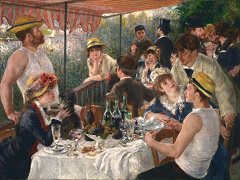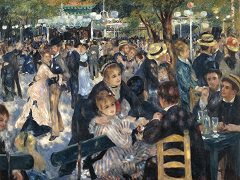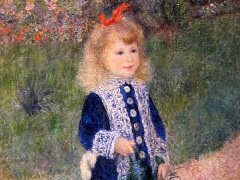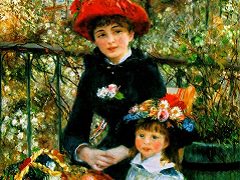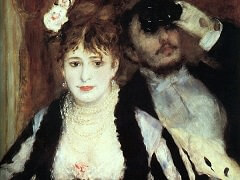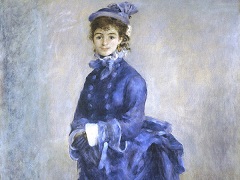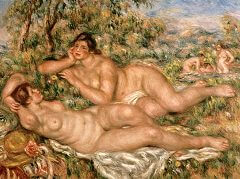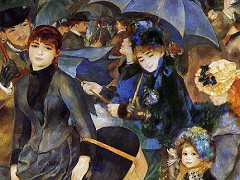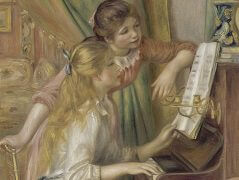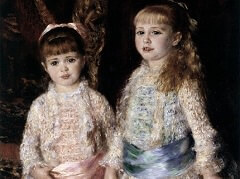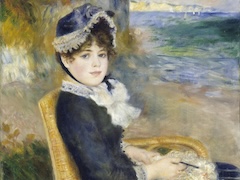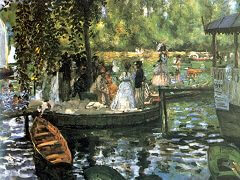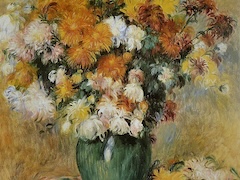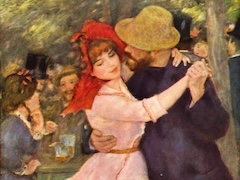Mother and Child - by Pierre-Auguste Renoir

In this picture surely one of the sweetest presentations of the mother and child theme - there is no hint of the mawk-ishness that could have come from a more literal rendering. Everywhere, Renoir has simplified. Style has been imposed upon his vision - a style that transforms every line, every color, every circumstance of space, shape, or light.
We observe, to begin with, the contrasted techniques of the human figures and the surrounding landscape. The latter is an accomplished piece of Impressionist painting, its atmospheric tones bleached yet warm, its forms and textures of a caressing softness. In contrast, the mother and her child are drawn with the precise contours of Renoir's "sour period," and their surfaces are painted in more flat, unbroken tones. Yet their chalky coloring - also derived from the study of Italian fresco painting a few years earlier - and many shapes and lines recall similar though weaker effects in the landscape; and one realizes how cunningly Renoir has brought into harmony the two antithetical manners.
As we study the figures, we observe what a brilliant draftsman was this artist who is more often celebrated for his color. The flattish areas of the white of the child's dress, the muted blue of the skirt, the tan of the jacket, and the flesh color - each has its distinctive contour and type of enrichment. Yet all are related: by edges that are continuous, by parallel directions, and by other correspondences-curves, points, and abrupt meanderings. Of particular interest are the intricate corkscrew silhouette of the child's legs and arm, and the related shapes of the mother's arm, breast, and head; and the way the breast and its nipple are almost exactly echoed in the drawing of the child's right thigh and hip, even to the point caused by the white skirt.
Renoir painted different versions of this picture of Mme. Renoir nursing their son Pierre, in 1885-86, and he took up the subject again after his wife's death in 1915, when he painted it in his loose, late style, and, with an assistant, sculpted it.

